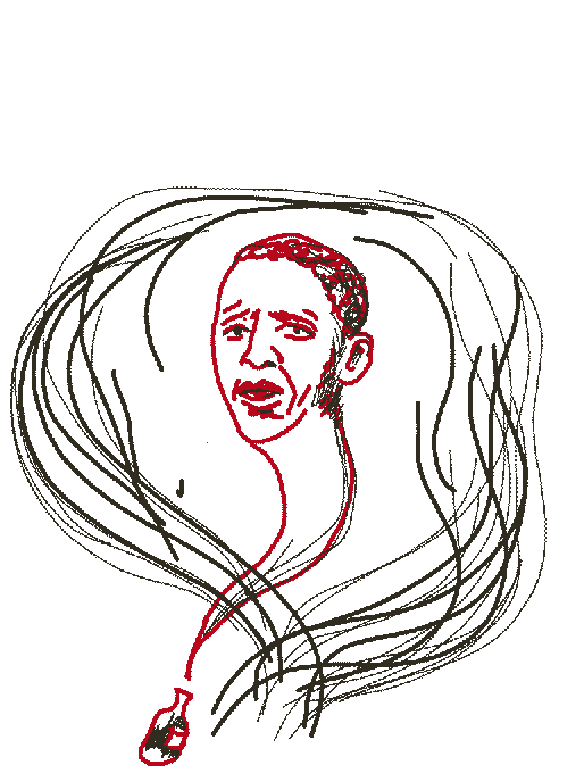Countries have long imposed tariffs as a means of protecting and shoring up domestic industries.
However, history and research have shown that the economic effects often fail to live up to the hype.
On Tuesday, the Biden administration announced the latest iteration of American import taxes: a wave of new and heightened tariffs on Chinese exports across a slew of industries deemed strategic to national security.
Economists expect that the newly announced $18 billion in tariffs likely will have a minimal near-term impact on GDP, inflation and monetary policy — some equating it to a mere “rounding error.” However, on a broader level, the picture could be more complex.
“The tariffs announced on China by the Biden administration foreshadow what is going to be a long, cold winter of economic conflict between the US and China,” economist Joe Brusuelas at RSM US told CNN.
The latest tariffs build upon former President Donald Trump’s sweeping $300 billion program in 2018 and 2019, which levied tariffs heavily against China and a variety of other trading partners and is still in effect.
Trump has made campaign trail promises for even steeper tariffs if he were elected — not just for China but an across-the-board 10% tariff on all imports, which economists have said would not only result in significant job losses in the US but also stoke inflation.
Economic growth, inflation and the Fed
The latest tariffs, which would roll out some time between now and 2026, come amid a solid job market, robust economic growth and strong consumer spending — but also a continuing battle against decades-high inflation that is keeping interest rates higher.
Biden’s tariff plan likely won’t move the needle for monetary policy, said Ryan Sweet, chief US economist at Oxford Economics.
“The additional tariffs are essentially a rounding error for inflation and GDP, carrying no implications for monetary policy,” Sweet wrote in a note issued Monday, when reports first indicated that changes to the US tariff policy were forthcoming. “The Fed will not make a mountain out of a mole hill, so the tariffs will not provide additional ammunition to justify keeping interest rates high for longer.”
On Tuesday, after learning the fuller scope of the Biden administration’s tariffs, Sweet told CNN those expectations shouldn’t change significantly.
Domestic manufacturing
In 2002, when President George W. Bush placed tariffs on imported steel and aluminum products, studies show that while it only cost the economy $30 million, it resulted in higher prices for American steel-consuming industries and led to a steep loss of jobs throughout the steel industry, especially among smaller firms that didn’t have the market power to influence prices.
Seven years later, when President Barack Obama increased tariffs on tires imported from China, the initiative was credited with saving about 1,200 jobs in the US tire manufacturing industry, but came at a $1.1 billion cost to Americans in the form of higher prices, the Peterson Institute for International Economics found.
The 2018 tariffs imposed by Trump did not result in an immediate boost to manufacturing employment but instead led to a net loss of jobs and rising prices for consumers due to higher input costs and retaliatory tariffs, Federal Reserve economists noted in a 2019 paper.
Costs to consumers
Tariffs typically make more political sense than economic sense, Sweet noted.
“Most economists view tariffs as a bad idea because they prevent a country from reaping the benefits of specialization, disrupt the movement of goods and services, and lead to a misallocation of resources,” Sweet wrote. “Consumers and producers often pay higher prices when tariffs are implemented.”
That’s because tariffs tax imports when they come ashore, adding costs for US distributors, retailers and, ultimately, consumers.
The US International Trade Commission said in a 2023 study that US importers “bore nearly the full cost” of the Trump tariffs.
Worse, some businesses appeared to take advantage of the trade war by bumping up prices even higher.
Goldman Sachs found that tariffs allowed US producers and non-Chinese exporters to the US market to “opportunistically raise their prices as well.”
The New York Fed found that the 2018 tariffs cost US households $419 per year because of higher tax burdens and market efficiency losses. Researchers estimated that would double as the tariffs went into effect in 2019.
As more time has passed, the positive economic effects have become even less clear cut.
The net economic effect of the import tariffs, retaliatory tariffs and agricultural subsidies “was at best a wash, and it may have been mildly negative,” to US jobs and businesses, economists wrote in a National Bureau of Economic Research working paper published in January 2024.
The trade war did appear to have political benefits in strengthening support for the Republican party in the US heartland and communities most affected by the tariffs, researchers noted in the NBER working paper.
“Residents of tariff-protected locations became less likely to identify as Democrats and more likely to vote for President Trump,” they wrote. “Voters thus appear to have responded favorably to the extension of tariff protections to local industries despite their economic cost.”
The flow of imports
The Covid-19 pandemic’s discombobulating effects on supply chains distort the full picture of how the 2018-2019 tariffs affected US manufacturing and trade.
US importers had started to substitute away from Chinese goods, but once the pandemic struck and US consumer demand increased, domestic inventory levels drew down quickly and China imports ramped back up, Wells Fargo economists wrote in an April note.
However, by the end of 2023, imports from China were down 3% relative to 2019 while there was a 50% growth in imports from South Korea, Singapore, Taiwan and Vietnam, Nicole Cervi, an economist at Wells Fargo, told CNN in an interview.
“There’s definitely some data to suggest that we’ve seen stronger imports from countries outside of China, and some of it may be that Chinese businesses are perhaps relocating some of their operations to these other countries that are not being affected by the Section 301 tariffs,” Cervi said.
Recent ocean and air freight data gives further rise to suspicions that China may be trying to circumvent US tariffs via Mexico, said Peter Sand, chief analyst with Xeneta, an ocean and air freight analytics and logistics company.
Container shipping imports from China to Mexico rocketed higher by 60% in January and 34% for the first quarter, Xeneta data shows.
“That’s a lot,” Sand told CNN in an interview. “It’s staggering.”
What was once an immature trade lane is now one of the busiest in the world, he said.
“It’s obvious that imports to this extent are not only for domestic purposes in Mexico,” he said.
CNN’s Matt Egan and Katie Lobosco contributed to this report.










